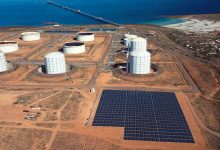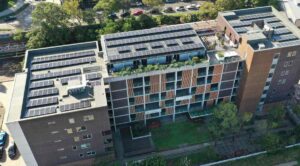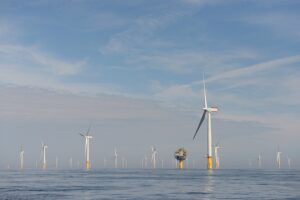AGL has partnered with oil and gas producer Santos to supply oil and gas processing facilities with solar power, announcing the completion of a 2.12MW solar array in Whyalla.
The system will supply up to 6 per cent of Santos’ electricity needs for the company’s Port Bonython hydrocarbon processing facility, providing more than 3,000MWh of electricity annually.
“We are proud to have completed this project which helps Santos deliver on its strategy of integrating renewable energy into its sites to lower costs and reduce its carbon footprint,” AGL’s interim Chief Customer Officer Mark Enzinger said
“We also delivered on our commitment to maximise local content in the project with the solar panel mounting system manufactured in Adelaide, the inverter station made in Melbourne, and the installation carried out by workers from Whyalla.”
The solar array is further evidence of the energy cost reductions that can be achieved for large energy users through the installation of utility-scale solar projects.
“This solar installation at Port Bonython is our biggest demonstration yet of how we can work with renewables to not only reduce our carbon emissions but to also free up more gas for the domestic markets,” Santos CEO Kevin Gallagher said.
“As a large industrial user of electricity, we’re also doing our bit to reduce the burden on the grid by generating new supply.”
Santos has developed a range of plans to deploy renewable energy, battery storage systems and trial carbon capture and storage at its Australian locations, in an effort to reduce the company’s emissions footprint, but also as means of reducing costs.
“We are also investing $10 million to test the potential for carbon capture, utilisation and storage in the Cooper Basin,” Gallagher said.
“Last month Santos announced the launch of a battery project for Darwin LNG, operated by ConocoPhillips, which will reduce carbon emissions from power generation by 20 per cent, as well as cut fuel gas consumption and operating costs.”
“In Western Australia, we’re replacing existing power generation turbines at our Devil Creek plant with more fuel-efficient ones – not only reducing emissions by more than 25% but also generating Australian Carbon Credit Units as a registered project with the Emissions Reduction Fund.”
“These initiatives are steps along the way to achieving our goal of net-zero emissions by 2050,” Mr Gallagher said.
The industrial town of Whyalla has emerged as a hotspot of renewable energy development, with Sanjeev Gupta signing off on a $350 million EPC contract for the 280MW Cultana solar farm, that will power Gupta’s Whyalla steelworks. Adani Renewables is also seeking to develop its own 160MW solar farm on neighbouring land.










